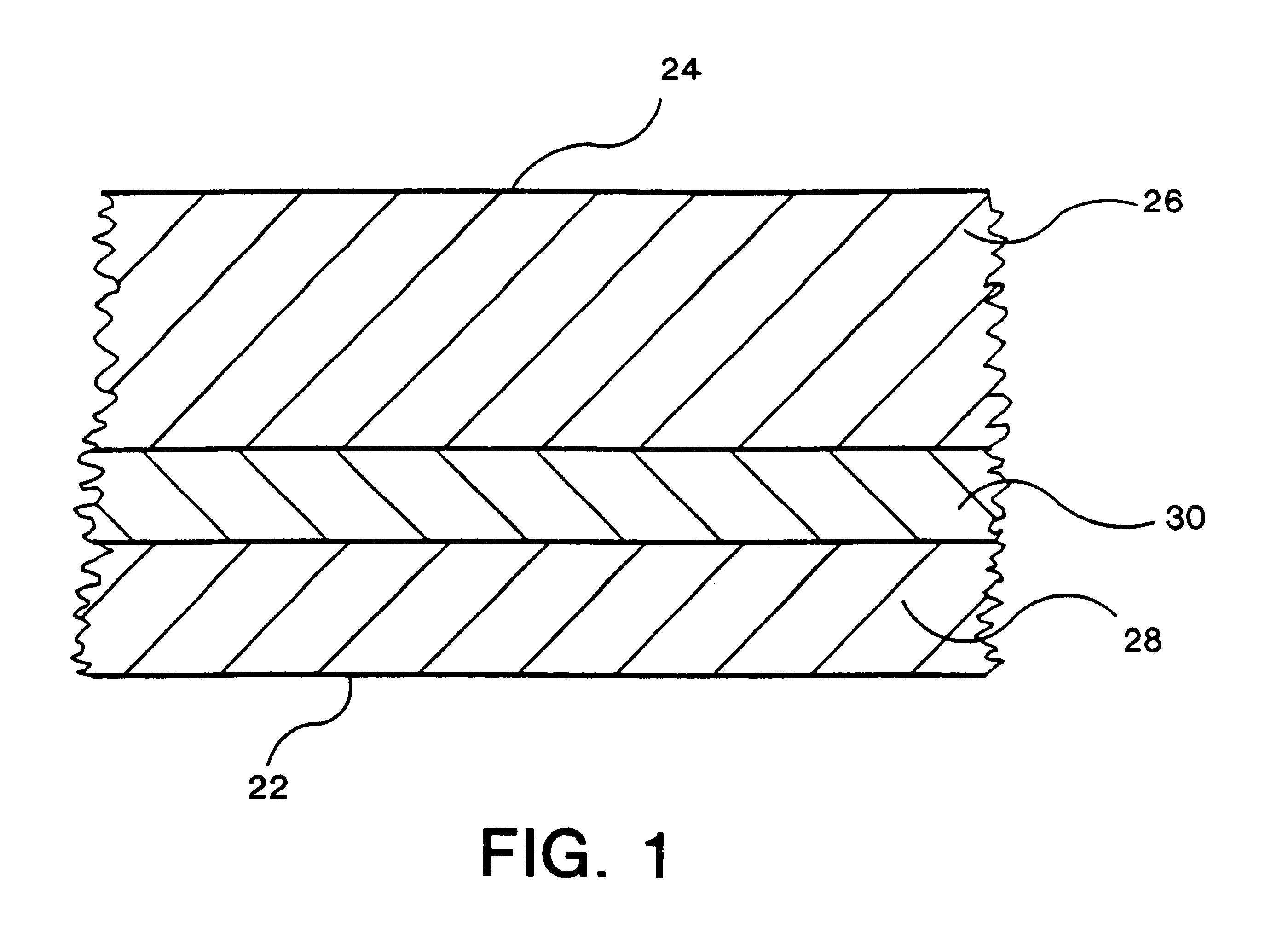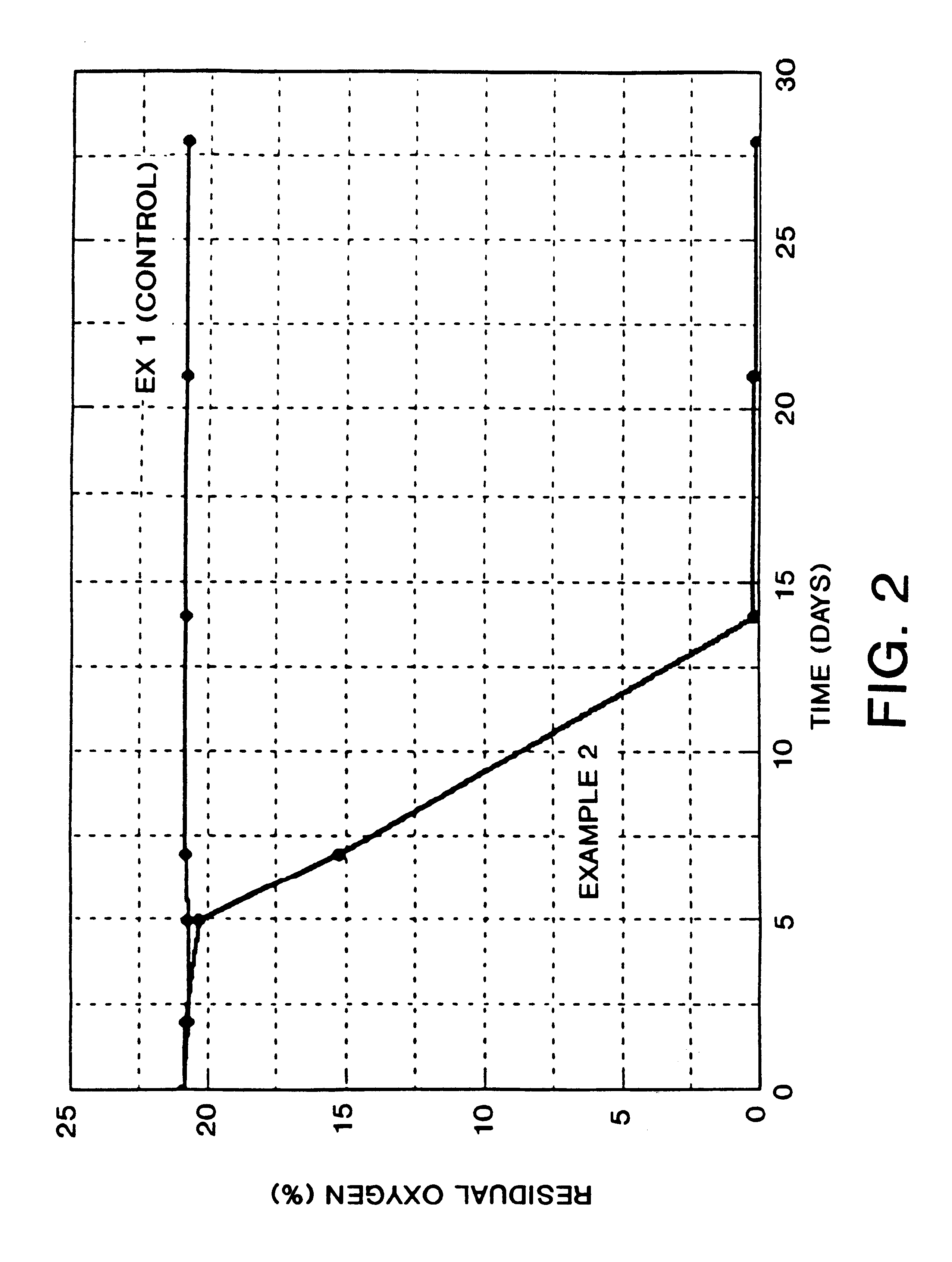Active oxygen scavenger compositions and their use in packaging articles
a technology of active oxygen and composition, which is applied in the direction of container preventing decay, rigid containers, synthetic resin layered products, etc., can solve the problems of reducing the scavenging potential, and not affording the opportunity to achieve optimal construction of the extreme similarity in properties of adjacent layers in the package wall
- Summary
- Abstract
- Description
- Claims
- Application Information
AI Technical Summary
Benefits of technology
Problems solved by technology
Method used
Image
Examples
examples 1-2
Examples 1 and 2 will show the method of preparation of oxygen scavenging addition type copolymers and their oxygen scavenging capacity.
Block Addition Copolymer Formation
The oxygen scavenging addition copolymers of this invention may be made on a pilot scale in a Werner and Pfleiderer ZSK-30 extruder. Example 2 and control Example 1 were processed in a Werner and Pfleiderer ZSK-30 co-rotating twin screw extruder with fully intermeshing screws having a 45:1 length to screw diameter. Pellet feed materials were metered into the first extruder section using KTRON loss-in-weight pellet feeders. The unmodified feed pellets used for these examples was ethylene methacrylic acid (EMA) polymer available under the trade name Nucrel.RTM. 599 from du Pont. Polybutadiene (PBD) oligomer diol of MW 1230 (R20LM available from Elf Atochem) is a viscous liquid and was separately conveyed using a Ruska piston style pump. The diol was injected directly onto the screws 15 diameters downstream of the EMA ...
examples 3-6
Examples 3-6 will show the method of preparation of an oxygen scavenging EAA container coating and its capacity for scavenging oxygen.
Into a glass jar was placed 100 g of ICI / Glidden's Water Reducible Spray Liner, Product Designation 640.degree. C. 696 (18% solids) whose composition is listed in Table 2. To this aqueous emulsion was added 0.48g of Elf Atochem R45 HT polybutadienediol (PBD MW of 2800). When dried as a can coating, the dried coating comprised 2.7 wt % PBD. The mixture was stirred magnetically for one hour, then capped and sealed until it was coated onto aluminum foil with a gated blade so as to emulate a can lining. The coated foil was placed on an aluminum plate which was heated on a laboratory hot plate set at 227.degree. C. (440.degree. F.) for 2 minutes to obtain a baked on coating. Sixteen such foils (21 cm.times.5.5 cm surfaces) were fan folded, and placed into a 250 cc Mason jar equipped with a metal cap containing a rubber sampling septum. The storage temperat...
PUM
| Property | Measurement | Unit |
|---|---|---|
| temperatures | aaaaa | aaaaa |
| glass transition temperature | aaaaa | aaaaa |
| storage temperatures | aaaaa | aaaaa |
Abstract
Description
Claims
Application Information
 Login to View More
Login to View More - R&D
- Intellectual Property
- Life Sciences
- Materials
- Tech Scout
- Unparalleled Data Quality
- Higher Quality Content
- 60% Fewer Hallucinations
Browse by: Latest US Patents, China's latest patents, Technical Efficacy Thesaurus, Application Domain, Technology Topic, Popular Technical Reports.
© 2025 PatSnap. All rights reserved.Legal|Privacy policy|Modern Slavery Act Transparency Statement|Sitemap|About US| Contact US: help@patsnap.com



